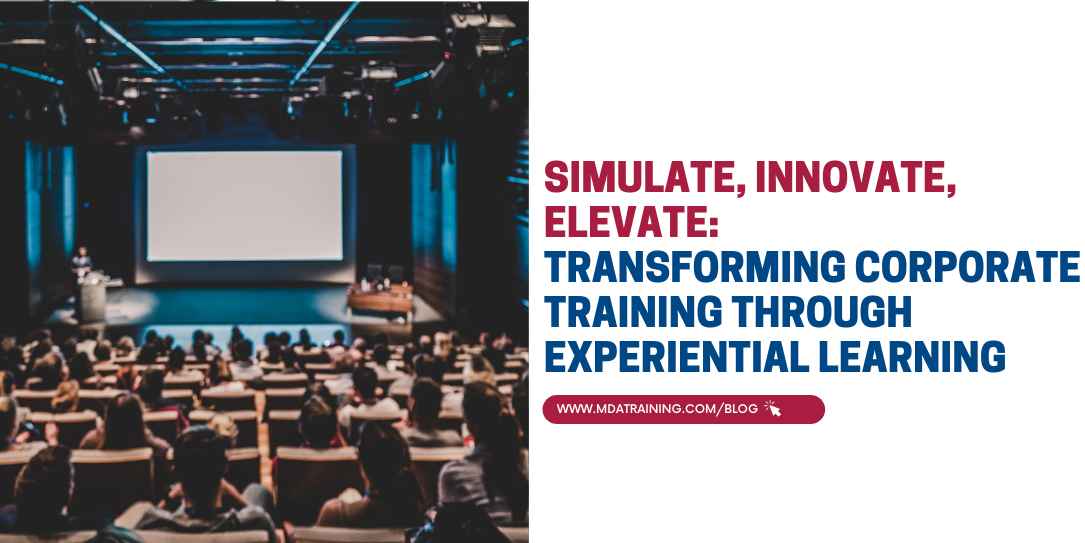Welcome to our comprehensive guide on transforming corporate training through experiential learning. In today's fast-paced and ever-changing business landscape, it is crucial for organisations to adopt innovative training methods that not only educate but also inspire their employees.
Traditional training approaches are often monotonous and fail to engage learners effectively. However, by embracing experiential learning, companies can simulate real-world scenarios, innovate their training strategies, and elevate their employees' skills and performance to new heights.
Understanding Experiential Learning
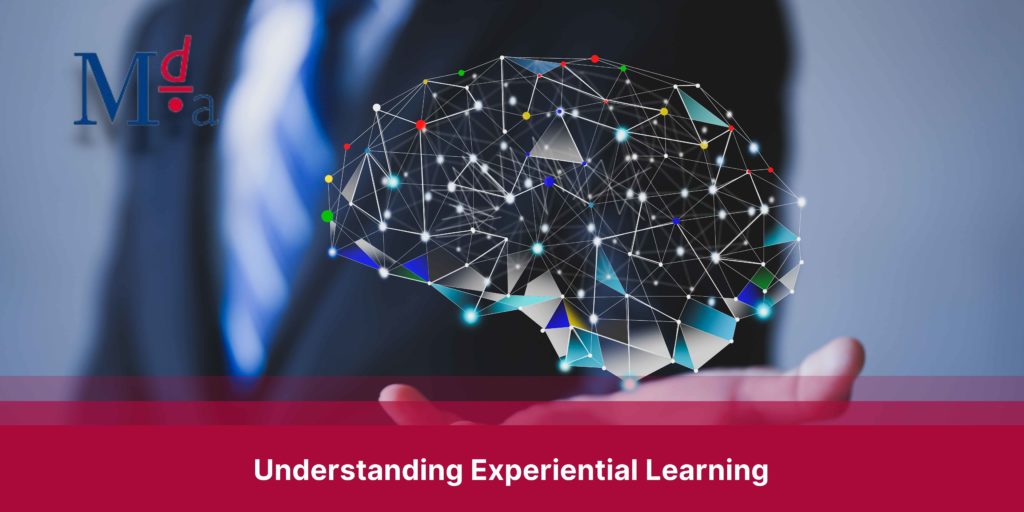
Experiential learning is an educational approach that focuses on hands-on experiences and reflection as a means of learning. It is a departure from traditional lecture-style training, as it actively involves participants in real-world scenarios.
Through immersive experiences and interactive activities, learners gain practical skills, problem-solving abilities, and a deeper understanding of the subject matter.
The Benefits of Experiential Learning in Corporate Training

1. Increased Engagement
One of the primary reasons why experiential learning surpasses traditional methods is its ability to captivate participants' attention. Engaged learners are more likely to retain information and apply it effectively in their roles. By incorporating interactive simulations, role-playing exercises, and team-based challenges, employees become active participants in their learning journey, leading to higher levels of engagement.
2. Enhanced Knowledge Retention
Retaining knowledge is crucial for any training program's success. Experiential learning creates memorable experiences that imprint crucial information in participants' minds. When learners actively apply new skills and information in realistic settings, they are more likely to retain what they have learned long after the training ends.
3. Application of Learning to Real-World Scenarios
Corporate training is only valuable when it translates into practical applications. Experiential learning bridges the gap between theory and practice. Learners are exposed to situations mirroring their daily challenges, enabling them to develop problem-solving skills that are directly applicable to their roles.
4. Fostering Collaboration and Communication
In modern workplaces, teamwork and effective communication are essential for success. Experiential learning often involves group activities that require participants to collaborate, communicate, and support each other. These experiences build camaraderie among employees and encourage a positive team dynamic.
5. Boosting Confidence and Decision-Making
Simulating real-world scenarios allows participants to make decisions and face consequences in a risk-free environment. This builds their confidence and hones their decision-making abilities. As employees become more confident in their skills, they are more likely to take initiative and contribute proactively to the organisation's growth.
Implementing Experiential Learning in Corporate Training
1. Identifying Learning Objectives
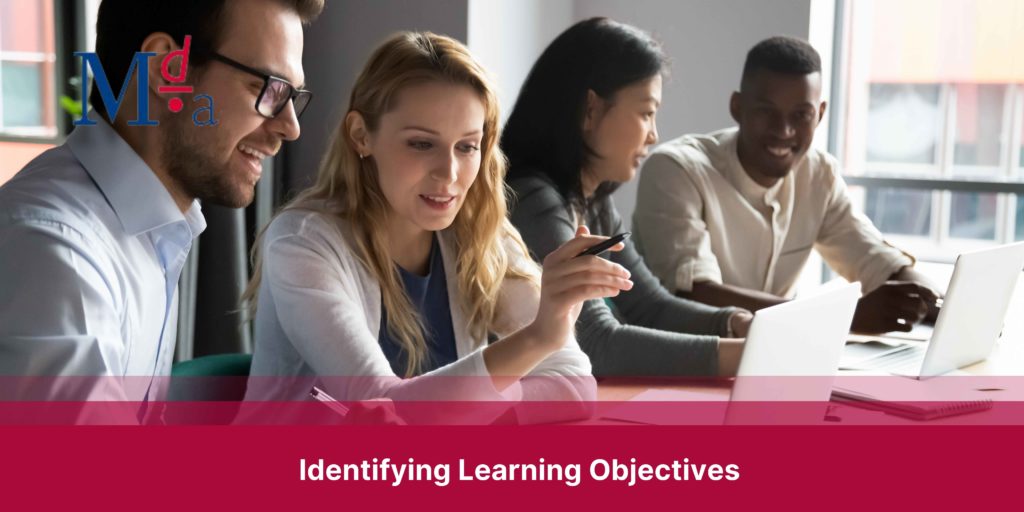
In the process of transforming corporate training through experiential learning, the first step is to identify clear and specific learning objectives. These learning objectives serve as the foundation for designing the entire training program. Here are some key points to consider when identifying learning objectives:
- Relevance to Organisational Goals: The learning objectives should align with the overall strategic goals of the organisation. For example, if the organisation aims to improve customer service, the learning objectives could focus on enhancing communication and problem-solving skills.
- Specific Skills and Knowledge: Determine the specific skills and knowledge that employees need to acquire or enhance. Be precise in defining what participants should be able to do or understand by the end of the training.
- Measurable Outcomes: Learning objectives should be measurable, allowing for the assessment of participants' progress and the overall effectiveness of the training. Using clear and quantifiable metrics helps track success.
- Realistic and Achievable: Ensure that the learning objectives are realistic and attainable within the given timeframe and resources. Setting unattainable goals can lead to frustration and disengagement among learners.
- Adaptability and Flexibility: The learning objectives should be adaptable to accommodate individual learning styles and preferences. Allowing for some flexibility ensures that participants can approach the learning process in ways that suit them best.
- Alignment with Learner's Needs: Consider the learners' existing knowledge and experience to design learning objectives that cater to their needs and challenges. Tailor the training to meet the specific requirements of the target audience.
- Addressing Skill Gaps: Identify areas where employees may have skill gaps and address them through the learning objectives. This will help bridge the knowledge divide and equip employees with the necessary competencies.
- Application-Oriented: Design learning objectives with a focus on real-world application. Ensure that the skills acquired in the training can be immediately put to use in the workplace.
- Motivating and Inspiring: Learning objectives should be designed to motivate and inspire participants to actively engage in the training process. Show how achieving the objectives will benefit both the individual and the organisation.
- Long-Term Impact: Consider the long-term impact of the training. Learning objectives should not be limited to short-term gains but should contribute to employees' continuous growth and development.
2. Designing Engaging Experiences

Designing engaging experiences is a critical aspect of transforming corporate training through experiential learning. By creating interactive and immersive activities, organisations can ensure that participants are actively involved in the learning process and gain valuable insights. Here are some strategies for designing engaging experiences:
- Gamification: Incorporate elements of gamification into the training to make it more enjoyable and competitive. Use points, badges, and leaderboards to incentivize participation and motivate learners to achieve better results.
- Simulations and Role-Playing: Develop realistic simulations and role-playing exercises that mimic real-world scenarios. This hands-on approach allows participants to apply their skills and knowledge in practical situations.
- Case Studies: Present real-life case studies that challenge participants to analyse problems and devise solutions. Case studies encourage critical thinking and decision-making skills.
- Interactive Quizzes and Polls: Integrate interactive quizzes and polls throughout the training to gauge participants' understanding and keep them engaged. Immediate feedback on their performance can enhance the learning experience.
- Group Projects and Collaboration: Promote teamwork and collaboration by assigning group projects. Encourage participants to work together, exchange ideas, and learn from one another.
- Storytelling: Incorporate storytelling techniques to make the training more relatable and memorable. Personal anecdotes or examples can help participants connect emotionally with the content.
- Micro-learning: Break the training content into bite-sized modules, making it easier for learners to absorb information. Microlearning allows participants to progress at their own pace and revisit specific topics if needed.
- Feedback Mechanisms: Provide opportunities for participants to give feedback on the training content and format. Actively listen to their suggestions and make improvements accordingly.
- Customisation: Tailor the learning experiences to meet individual needs and preferences. Customised content ensures that participants find the training relevant and valuable.
- Real-Time Challenges: Introduce unexpected challenges during the training to simulate real-world pressure. This fosters adaptability and problem-solving skills.
- Incorporate Multimedia: Utilise a variety of multimedia elements such as videos, infographics, and animations to make the training visually engaging and appealing.
- Experiential Field Trips: Organise field trips or visits to relevant locations where participants can apply their learning in practical settings.
- Incorporate Storyboarding: Use storyboarding techniques to plan and organise the flow of the training. A well-structured storyline keeps participants engaged and focused.
- Encourage Peer Learning: Create opportunities for peer learning and knowledge sharing. Pair participants with different skill levels to encourage mentoring and collaboration.
3. Facilitating Reflection
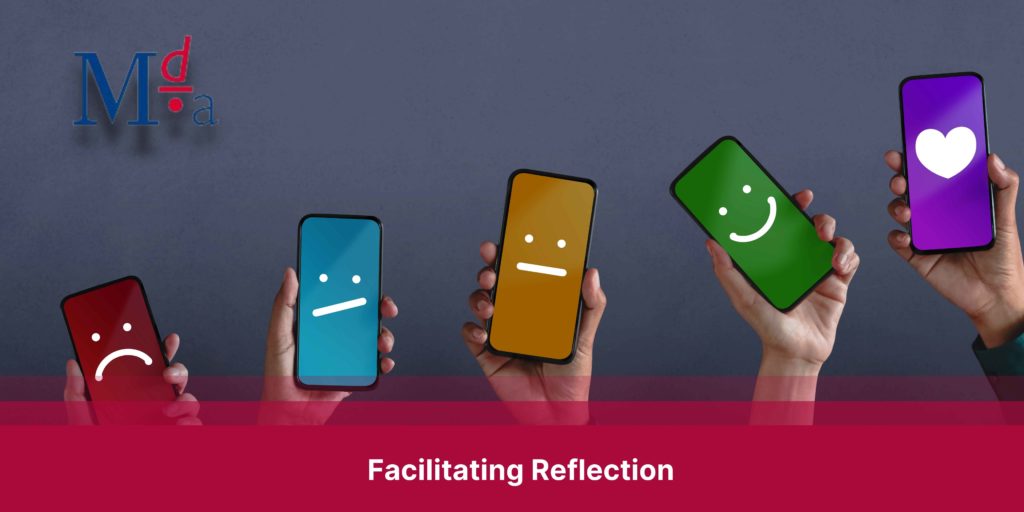
Facilitating reflection is a crucial step in the experiential learning process. It allows participants to process their experiences, extract meaningful insights, and connect their learning to real-world applications. Here are some effective ways to facilitate reflection during corporate training:
- Structured Debriefing Sessions: Schedule regular debriefing sessions after experiential activities. Encourage participants to share their thoughts, feelings, and observations about the experience. Facilitators can ask open-ended questions to stimulate discussion and deeper reflection.
- Journaling: Provide participants with individual journals to record their reflections throughout the training. Writing allows them to express their thoughts privately and in a structured manner.
- Group Discussions: Organise small group discussions where participants can exchange their experiences and learn from each other's perspectives. Group discussions create a supportive environment for reflection and knowledge sharing.
- Guided Reflection Prompts: Offer specific reflection prompts that guide participants in analysing their experiences. For example, ask them to identify key takeaways, challenges faced, and how they plan to apply their learning in their roles.
- Visual Representations: Encourage participants to use visual representations, such as mind maps or diagrams, to map out their learning journey. Visual aids can help in better understanding complex experiences.
- Peer Feedback: Encourage participants to provide constructive feedback to their peers during reflection sessions. Peer feedback fosters a culture of continuous improvement and mutual support.
- Goal Setting: Integrate goal-setting exercises into the reflection process. Participants can set personal development goals based on their insights from the training.
- Role of Facilitators: Facilitators should actively listen and refrain from judgement during reflection sessions. Their role is to guide discussions, not provide answers.
- Time for Individual Reflection: Allow participants sufficient time for individual reflection before sharing their insights with the group. This encourages deeper introspection and thoughtful contributions.
- Encourage Critical Thinking: Prompt participants to think critically about their experiences and question assumptions. This helps in gaining a deeper understanding of the learning process.
- Recognise Growth and Achievements: Acknowledge and celebrate participants' growth and achievements during reflection sessions. Positive reinforcement boosts motivation and engagement.
- Linking Theory to Practise: Encourage participants to connect the theoretical concepts learned during training to their real-life experiences in the workplace.
- Reflect on Challenges and Mistakes: Guide participants to reflect on challenges faced and mistakes made during the training. Emphasise that learning often occurs through overcoming obstacles.
- Encourage Emotional Expression: Create a safe space for participants to express their emotions related to the learning experiences. Emotional expression aids in processing and learning from emotional responses.
- Continuous Reflection: Promote the habit of continuous reflection beyond the training program. Encourage participants to reflect on their progress and learning periodically in their day-to-day work.
4. Measuring Learning Outcomes
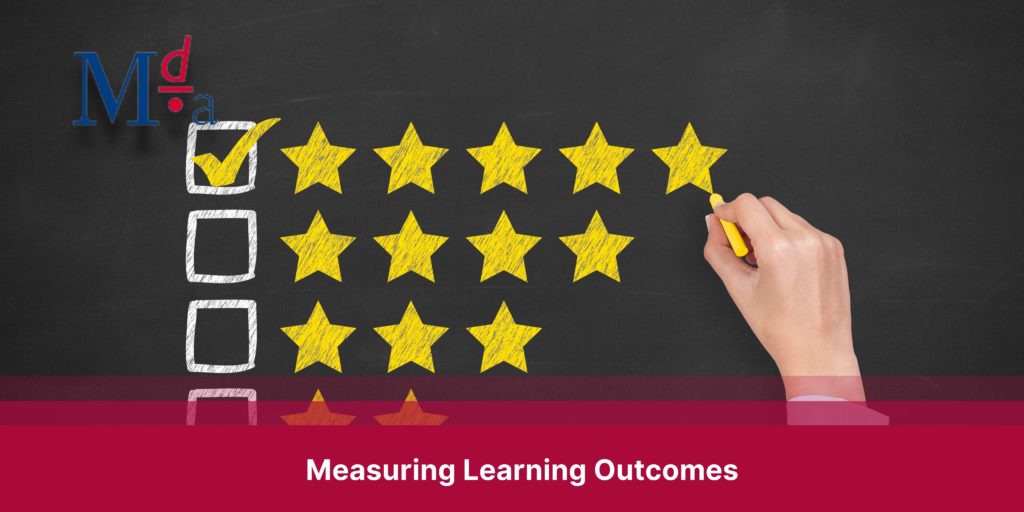
Measuring learning outcomes is an essential part of evaluating the effectiveness of corporate training through experiential learning. It allows organisations to assess the impact of the training program, identify areas of improvement, and make data-driven decisions for future training initiatives. Here are some effective methods for measuring learning outcomes:
- Knowledge Assessments: Conduct pre- and post-training assessments to gauge participants' knowledge levels. These assessments can be in the form of quizzes, tests, or surveys. Comparing the scores before and after the training provides insights into the knowledge gained during the program.
- Skill Demonstrations: Organise practical skill demonstrations where participants showcase the skills they have acquired through experiential learning activities. This method helps assess their ability to apply knowledge in real-world scenarios.
- Performance Evaluations: Observe participants' performance in their roles after the training. Assess if they are applying the new skills and knowledge effectively and whether there is an improvement in their performance.
- Feedback Surveys: Collect feedback from participants about their learning experience. Use surveys to understand their perceptions of the training's effectiveness, relevance, and overall impact.
- Peer and Supervisor Feedback: Seek feedback from peers and supervisors regarding participants' performance and behaviour changes after the training. This 360-degree approach provides a holistic view of the learning outcomes.
- Learning Analytics: Utilise learning analytics and data tracking tools to monitor participants' progress throughout the training. These tools can provide valuable insights into engagement levels and learning patterns.
- Quantitative Metrics: Set specific quantitative metrics aligned with the learning objectives. For example, if the objective is to improve customer service, measure metrics such as customer satisfaction scores or response times.
- Qualitative Assessments: Conduct qualitative assessments through interviews or focus groups to gather in-depth insights into participants' learning experiences, challenges faced, and the value gained.
- Post-Training Projects: Assign post-training projects that allow participants to apply their learning in practical scenarios. Evaluate the outcomes of these projects to measure the training's impact on their problem-solving abilities.
- Retention Assessments: Conduct follow-up assessments weeks or months after the training to evaluate long-term knowledge retention. This assessment helps identify if the learning is sustainable and integrated into daily practices.
- Behavioural Observations: Observe changes in participants' behaviour and attitudes in the workplace. Positive changes, such as increased collaboration, improved communication, or higher motivation, indicate successful learning outcomes.
- ROI Analysis: Calculate the return on investment (ROI) of the training program by comparing the costs incurred with the tangible benefits, such as increased productivity or reduced errors.
- Benchmarking: Benchmark the learning outcomes against industry standards or best practices to gain a broader perspective on the training's effectiveness.
- Feedback from Clients or Customers: If applicable, gather feedback from clients or customers who interact with trained employees. Their input can provide insights into the impact of the training on customer service and satisfaction.
- Continuous Improvement: Use the data collected from various assessment methods to continuously improve the training program. Address any identified weaknesses and build on successful elements for future iterations.
Unveiling the Triumph of Experiential Training: A Compelling Case Study of a Leading Multinational Corporation's Success
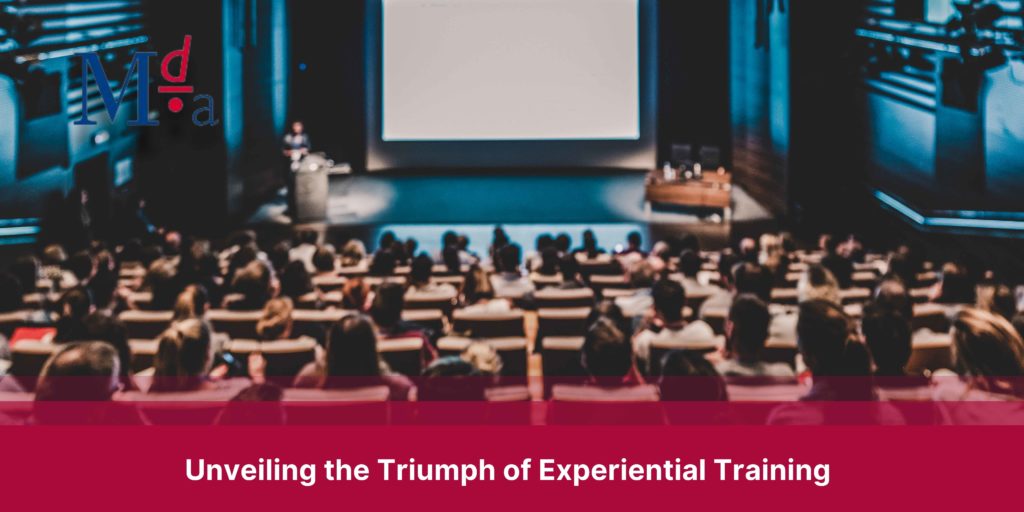
Introduction: Our client, a prominent technology company based in the UK, is renowned for its dedication to innovation and employee development. Seeking to enhance their corporate training program, they recognised the need for a more effective approach to empower their software development team. To achieve this, they decided to embrace experiential learning, a transformative methodology, with the expert guidance of MDA Training.
Challenges Faced: Before adopting experiential learning, the company encountered several obstacles with their traditional training methods. Employees often found standard lectures and presentations uninspiring, leading to disengagement and limited retention of information. Moreover, they struggled to apply theoretical knowledge to real-world situations, hindering innovation and overall productivity.
Adopting Experiential Learning: Understanding the importance of change, our client made a strategic decision to integrate experiential learning methodologies. The objective was to foster creativity, collaboration, and problem-solving within their software development team while promoting continuous learning and professional growth.
Designing the Experiential Training Program: To achieve their goals, MDA Training worked closely with the client to identify clear learning objectives aligned with the company's mission. The program aimed to enhance technical skills, encourage effective communication, and cultivate a culture of innovation. The training was meticulously designed to achieve these objectives.
Custom-Built Simulations: Central to the experiential training were custom-built simulations that emulated real-world software development scenarios. The team faced complex challenges they might encounter in their roles, working collaboratively to devise innovative solutions.
Immediate Feedback and Coaching: Throughout the simulations, experienced facilitators provided real-time feedback and coaching. This allowed team members to reflect on their performance, identify areas for improvement, and make adjustments promptly.
Encouraging Risk-Taking: Experiential learning fostered a safe environment for risk-taking, empowering the team to experiment with new ideas without fear of failure. This encouraged creativity and a sense of ownership in their learning journey.
Reflection and Knowledge Sharing: Following each simulation, the team engaged in structured debriefing sessions. They shared their experiences, insights, and lessons learned, gaining a deeper understanding of the software development process and analysing their decisions.
Measuring Learning Outcomes: To evaluate the success of the experiential training, various assessment methods were employed. Pre- and post-training knowledge assessments gauged technical proficiency, while peer evaluations and supervisor feedback measured improvements in communication and collaboration skills.
The Results: The impact of the experiential training was profound. Team members reported significantly increased engagement and motivation, feeling more connected to their work and confident in their abilities. The hands-on approach developed practical problem-solving skills and a deeper understanding of the software development lifecycle.
Quantifiable Outcomes: Quantitatively, the company observed a notable reduction in software errors and increased efficiency in their development processes. Projects were completed faster, and the team demonstrated a higher level of innovation in their solutions.
Long-Term Benefits: Beyond immediate results, the experiential training laid the foundation for a culture of continuous learning and growth. Team members continued to apply their newfound skills, contributing to ongoing improvements in product development and customer satisfaction.
What’s Next?
Unleash Your Team's Full Potential: Embrace Experiential Learning for Exceptional Corporate Training Success. With a wealth of experience in pioneering methodologies and practical simulations, MDA Training can enhance your employees' abilities and foster sustainable growth within your organisation.
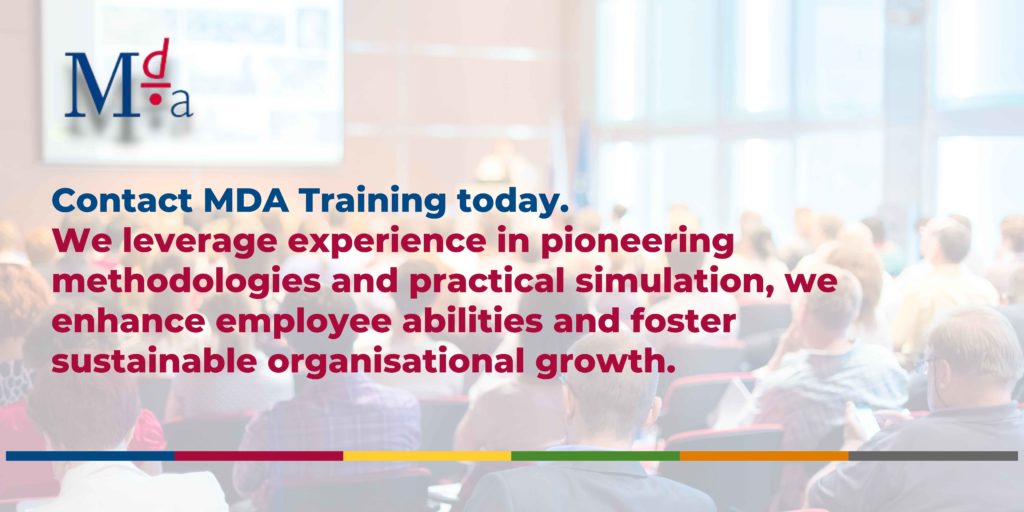
Contact MDA Trainers today to transform your training approach and take it to the next level.









